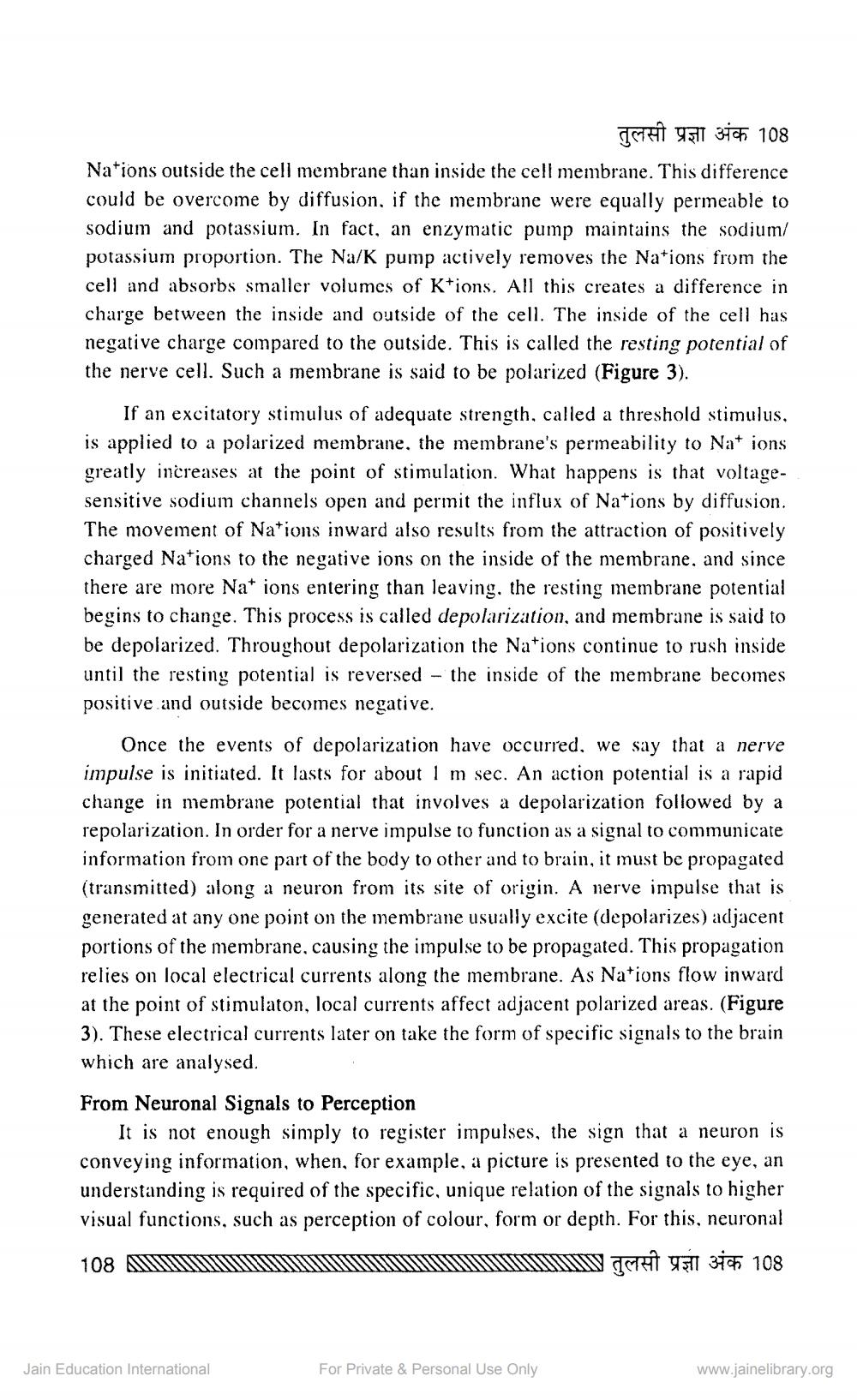________________
तुलसी प्रज्ञा अंक 108 Nations outside the cell membrane than inside the cell membrane. This difference could be overcome by diffusion, if the membrane were equally permeable to sodium and potassium. In fact, an enzymatic pump maintains the sodium/ potassium proportion. The Na/K pump actively removes the Nations from the cell and absorbs smaller volumes of Ktions. All this creates a difference in charge between the inside and outside of the cell. The inside of the cell has negative charge compared to the outside. This is called the resting potential of the nerve cell. Such a membrane is said to be polarized (Figure 3).
If an excitatory stimulus of adequate strength, called a threshold stimulus, is applied to a polarized membrane, the membrane's permeability to Na+ ions greatly increases at the point of stimulation. What happens is that voltagesensitive sodium channels open and permit the influx of Nations by diffusion. The movement of Nations inward also results from the attraction of positively charged Nations to the negative ions on the inside of the membrane. and since there are more Na+ ions entering than leaving, the resting membrane potential begins to change. This process is called depolarization, and membrane is said to be depolarized. Throughout depolarization the Nations continue to rush inside until the resting potential is reversed the inside of the membrane becomes positive and outside becomes negative.
-
Once the events of depolarization have occurred, we say that a nerve impulse is initiated. It lasts for about 1 m sec. An action potential is a rapid change in membrane potential that involves a depolarization followed by a repolarization. In order for a nerve impulse to function as a signal to communicate information from one part of the body to other and to brain, it must be propagated (transmitted) along a neuron from its site of origin. A nerve impulse that is generated at any one point on the membrane usually excite (depolarizes) adjacent portions of the membrane, causing the impulse to be propagated. This propagation relies on local electrical currents along the membrane. As Nations flow inward at the point of stimulaton, local currents affect adjacent polarized areas. (Figure 3). These electrical currents later on take the form of specific signals to the brain which are analysed.
From Neuronal Signals to Perception
It is not enough simply to register impulses, the sign that a neuron is conveying information, when, for example, a picture is presented to the eye, an understanding is required of the specific, unique relation of the signals to higher visual functions, such as perception of colour, form or depth. For this, neuronal
108
| तुलसी प्रज्ञा अंक 108
Jain Education International
For Private & Personal Use Only
www.jainelibrary.org




